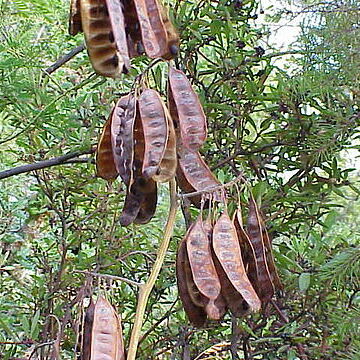Trees or shrubs. Lvs 2-paripinnate, with few to numerous paired pinnae along the rachis and each pinna with few to numerous, sessile paired pinnules; glands present on petiole or rachis; stipules minute or conspicuous. Infl. a cylindric spike or raceme; spikes or racemes axillary, solitary or arranged in panicles; bracts and bracteoles usually small. Fls actinomorphic, usually 5-merous, white to yellow, or yellow-green; calyx shortly toothed or lobed; petals connate to about the middle. Stamens numerous, united into a closed tube for part of length, exserted; anthers uniform, versatile. Style filiform; stigma terminal. Pod 2-valved, straight, dehiscent; seeds without an aril.
Unarmed trees and shrubs. Leaves bipinnate; stipules inconspicuous, caducous; rachis and pinnae with extrafloral nectaries; pinnae 5-22-jugate; leaflets sessile, opposite. Inflorescence pedunculate, spicate or racemose, sometimes arranged in axillary panicles near branchlet apex. Flowers 5-merous, perfect; sepals and petals connate, valvate. Stamens numerous, connate basally; anthers eglandular. Pod flat, straight, chartaceous to coriaceous, dehiscent along both sutures. Seeds flat or biconvex with hard coat; pleurogram present.

